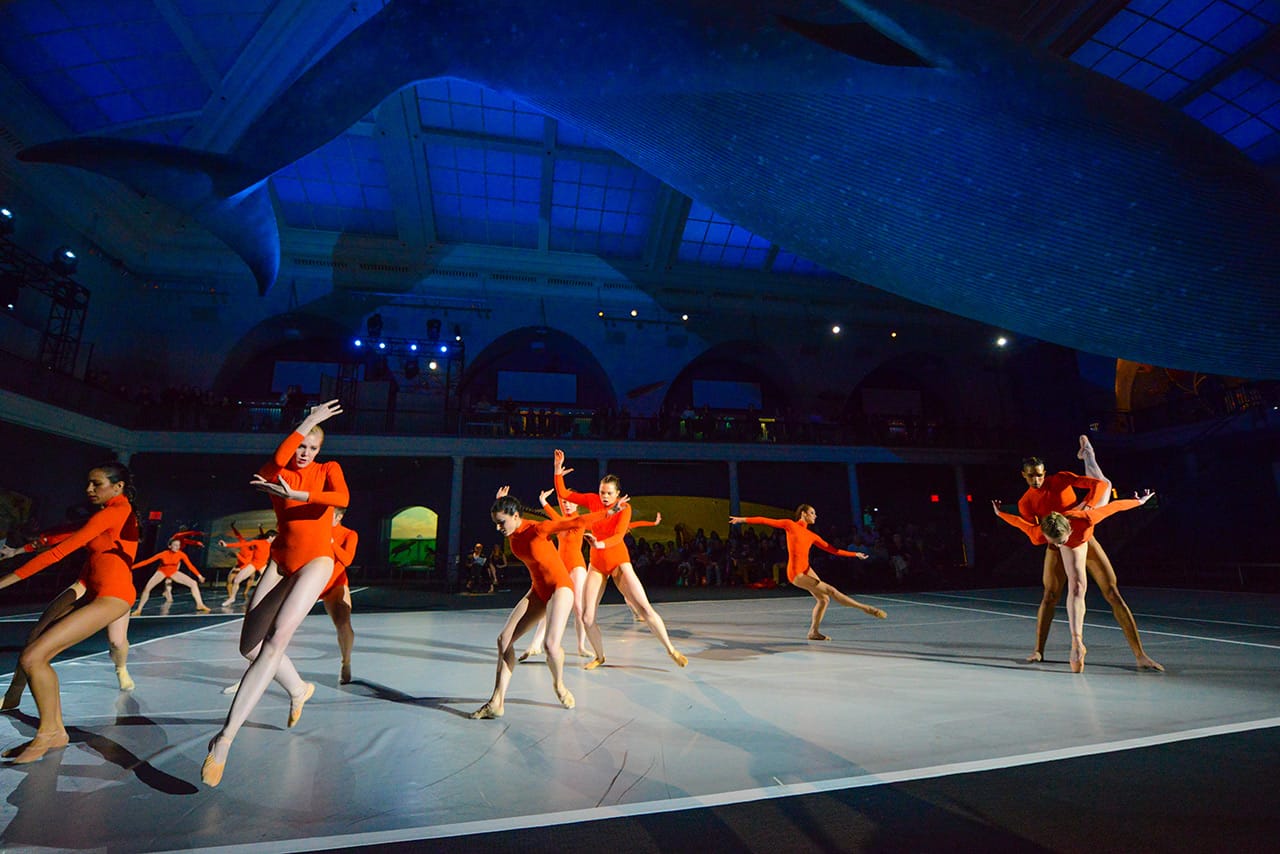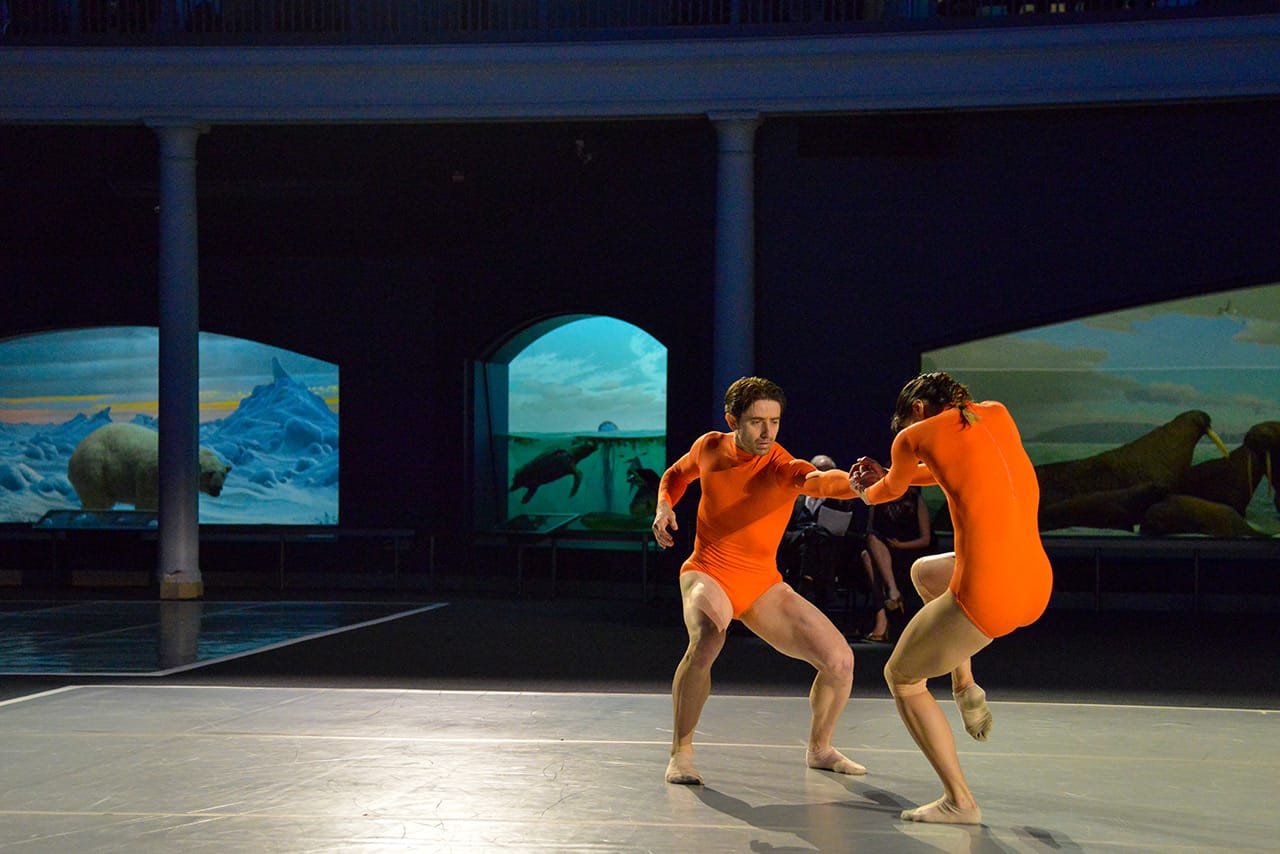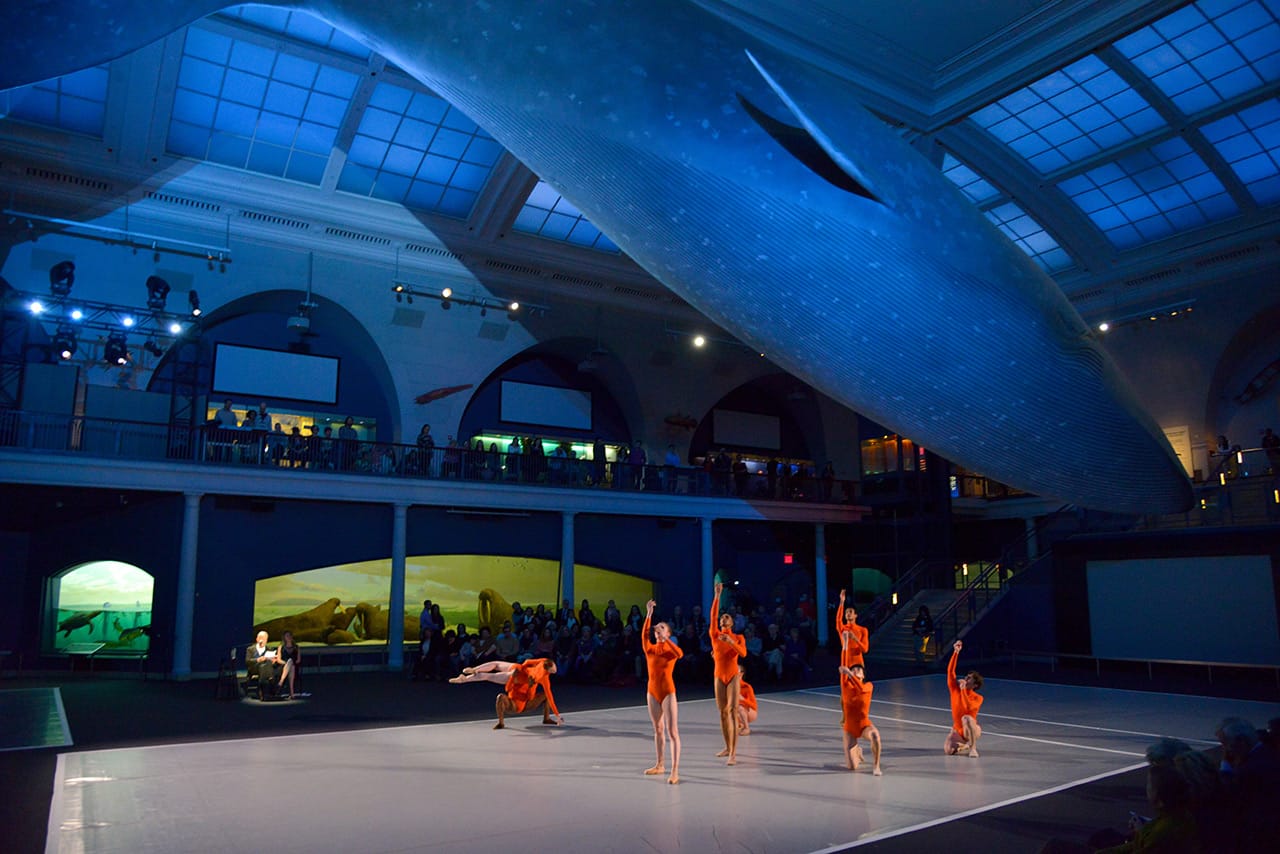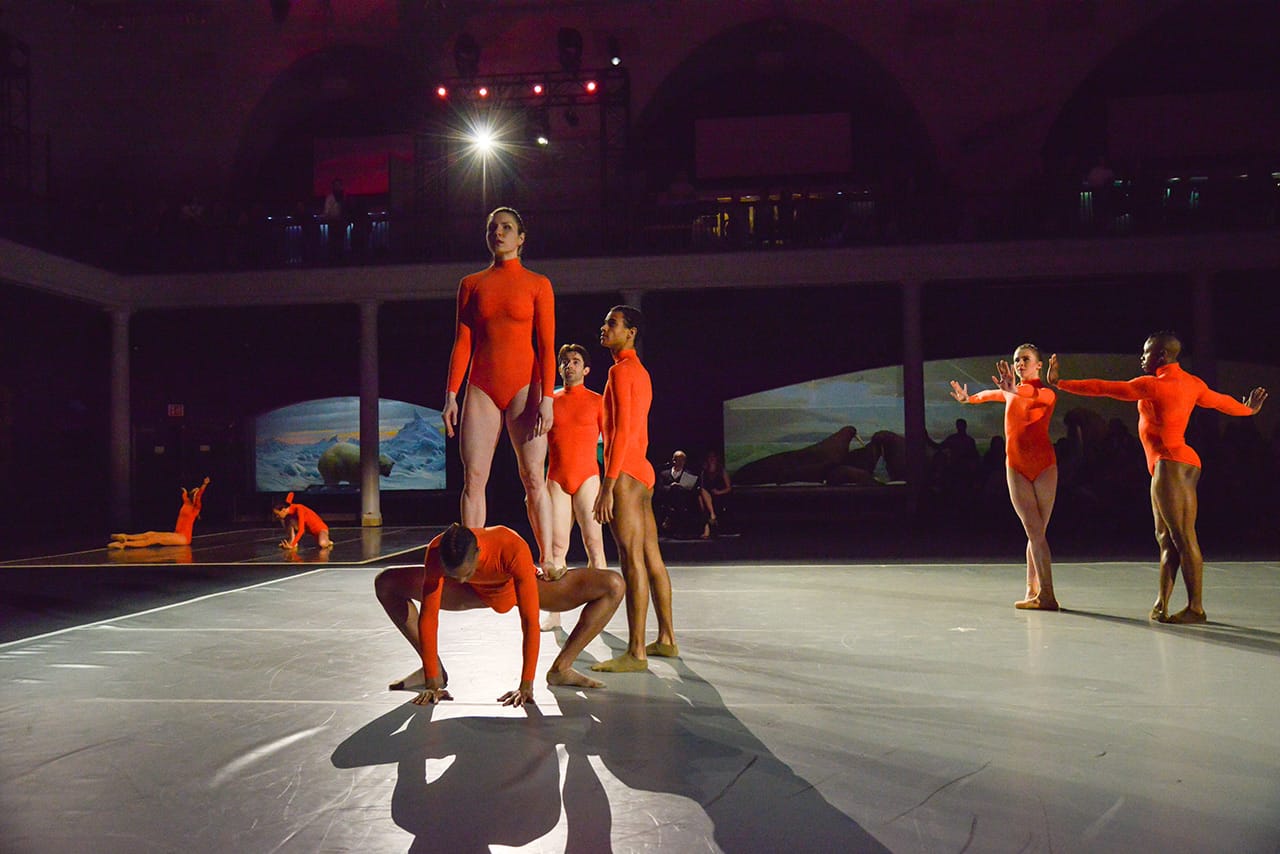Choreographing a Response to Climate Change
Dancing about climate change makes about as much sense as ... painting Op art compositions to give stock tips. Or crafting a steel sculpture that instructs viewers how to renew their driver's licenses. Or composing an opera to review a restaurant.

Dancing about climate change makes about as much sense as … painting Op art compositions to give stock tips. Or crafting a steel sculpture that instructs viewers how to renew their driver’s licenses. Or composing an opera to review a restaurant. The challenge of conveying a very pragmatic subject through a medium better suited to nuance and complexity is part of the appeal of projects like On the Nature of Things, a new dance piece developed by choreographer Karole Armitage in collaboration with biologist Paul Ehrlich (who also narrates the performance), and staged beneath the blue whale model in the Milstein Hall of Ocean Life at New York’s American Museum of Natural History. The resulting performance has powerful sequences, and Armitage’s core company of dancers is absolutely incredible to watch, but it suffers from many generic passages and a nearly total lack of engagement with its incredible setting — quite possibly the most magical room in all of New York City.

There are flickers of stylized animal, floral, insect-like, primitive, and complex social behavior in Armitage’s choreography, which at times resonate with Ehrlich’s narration and the changing musical accompaniment (including pieces by Philip Glass, Michael Gordon, and Arvo Pärt). In the opening, as a single female dancer seems to achieve self-awareness, looking intently at her own hand before being joined by a male partner with whom she performs a series of caveman-like gestures, Ehrlich contrasts the complexity of our current situation to the relationship early hunter-gatherer societies had to the environment. Later, as he uses the example of pollination cycles and bees to illustrate the more imperceptible but equally devastating effects of climate change, a dozen or so dancers execute movements that evoke blooming flowers and insects emerging from cocoons. The bright orange, legless unitards imposed on all the dancers make sense in that particular sequence, though they are not especially flattering and give the whole performance the look of a dated science fiction movie, like an interpretive dance adaptation of Logan’s Run.
In a passage during which Ehrlich describes how unsustainable human consumption patterns have become as our population has boomed — a favorite topic of his — the dancers (30 in all) split into four large groups competing for space on the stage. Near the end of the piece, a hair-raising en pointe performance by its most mesmerizing dancer, Emily Wagner, makes plain the dire predicament we’re in. At moments like these, Armitage’s choreography doesn’t only illustrate Ehrlich’s words, but gives them a visceral and affecting power.
However, there are long stretches during which the dancers’ movements feel only vaguely related to the subject at hand, or based more on standard expectations of what modern dance ought to look like. A series of duets and a sweet but sentimental finale are especially glaring instances of the piece’s tendency to default to generic conventions. Armitage’s failure to make use of the setting in any meaningful way exacerbates these problems. There are 14 historic dioramas, a giant whale, a model of the Tree of Life, and a full-scale coral reef lurking nearby, but none of them are incorporated into the piece, which makes the most conventional use imaginable of an incredibly unconventional performance space.

Ultimately, in spite of both its very powerful and more unremarkable moments, On the Nature of Things fails its own test. “You can’t make decisions just based on facts,” Ehrlich said while introducing the piece on Wednesday night. “What you need to make people change their minds is narrative.” If the goal of this project is to bring climate change deniers (or mere skeptics) into the fold, staging a modern dance inside a natural history museum, however admirable, is like preaching to the converted. To make the general population aware of rising sea levels, the sixth mass extinction, and the enormous cultural reorientation required to avoid our own eventual destruction, we need more than specialized dances about climate change — we need massively multiplayer online games, reality TV shows, Disney movies, and Rihanna albums about it.

On the Nature of Things continues in the Milstein Hall of Ocean Life at the American Museum of Natural History (Central Park West at 79th Street, Upper West Side, Manhattan) through March 27. Tickets are available here.




